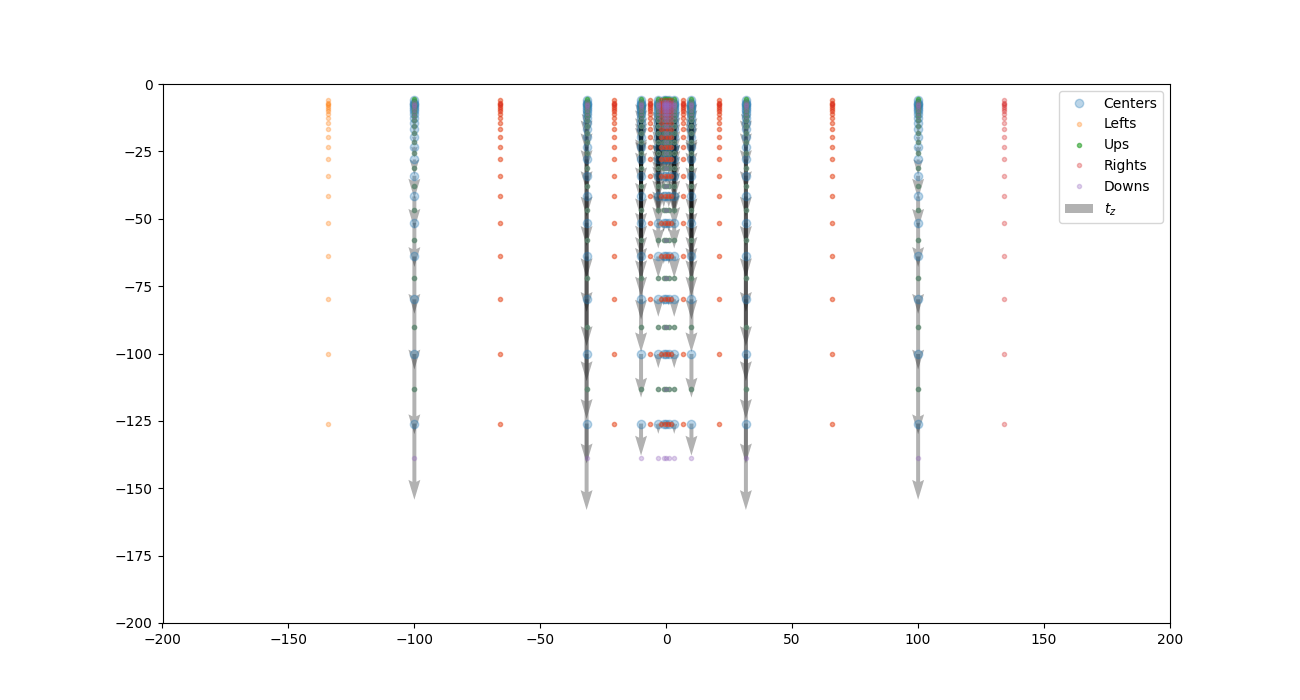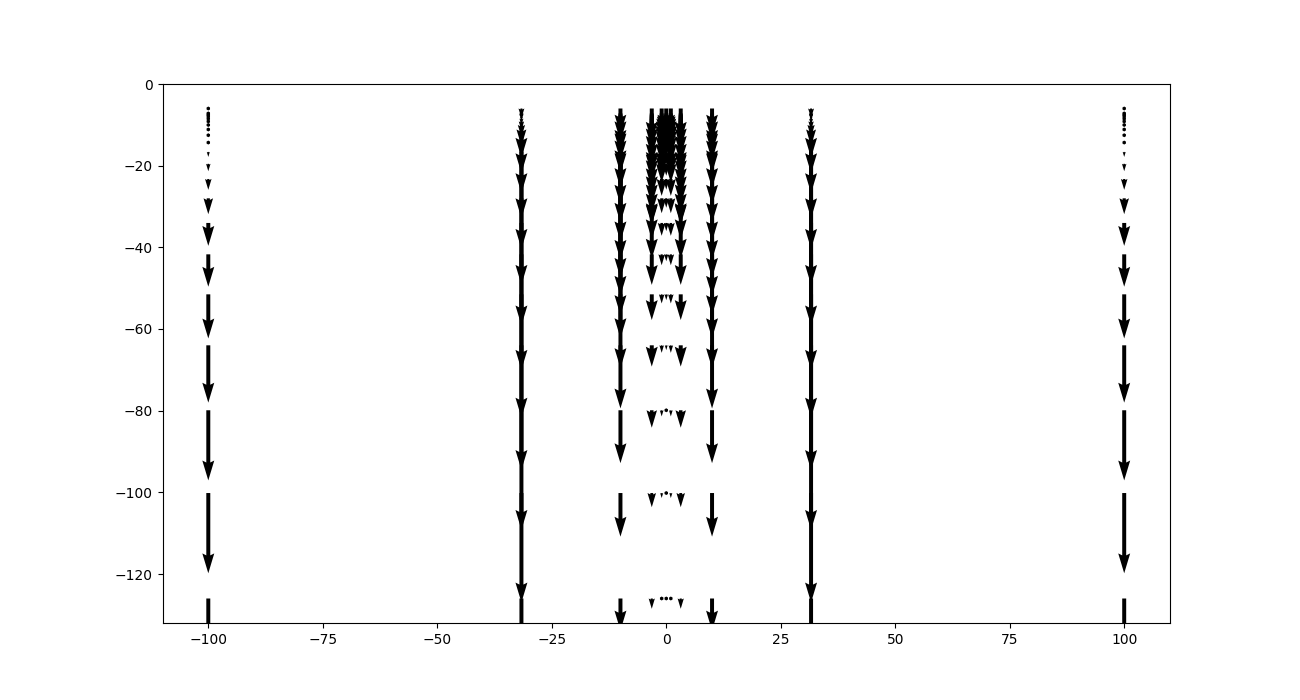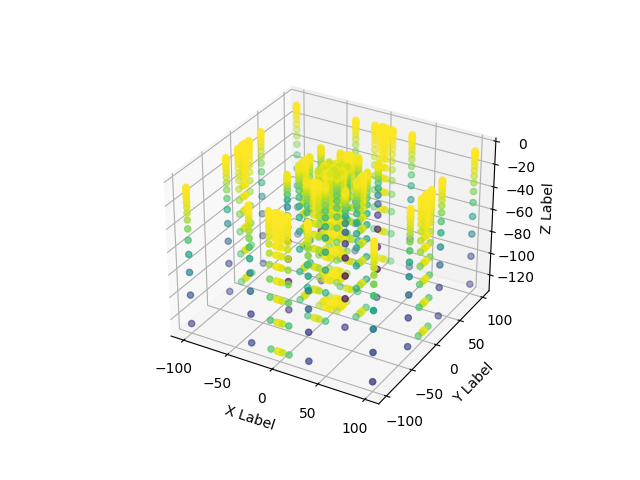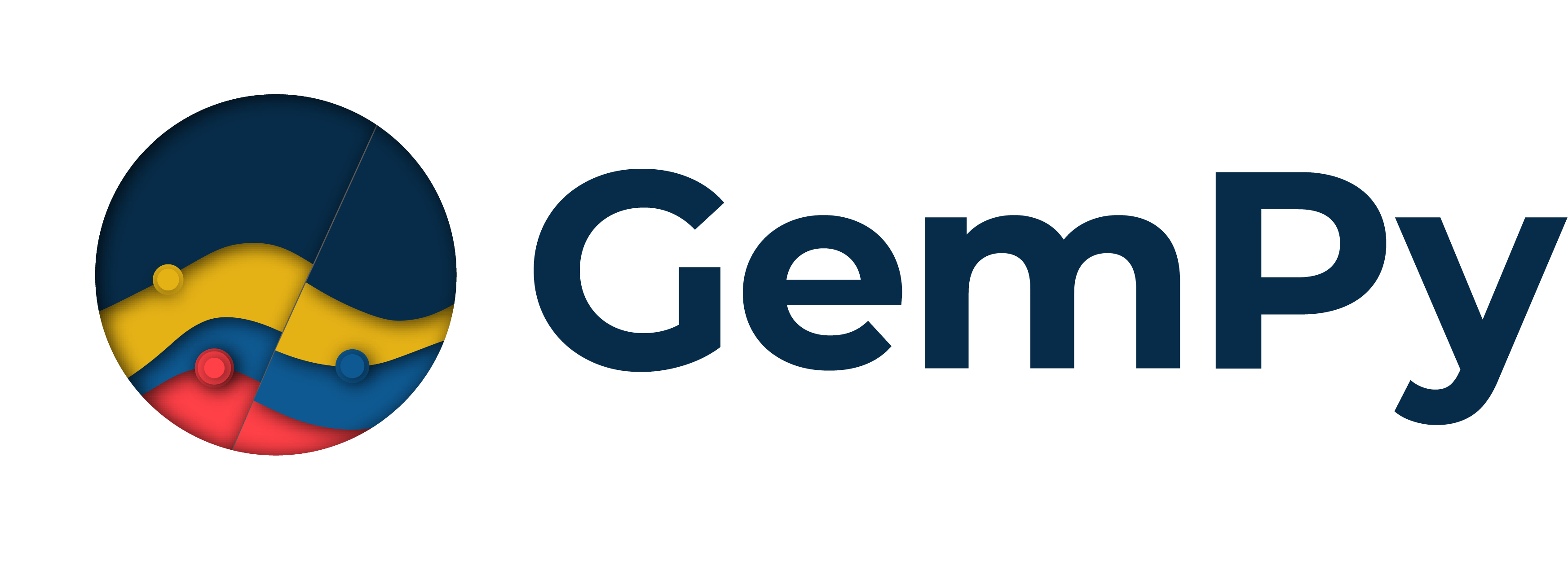Note
Click here to download the full example code
2.2: Centered Grid.¶
Geophysics Preprocessing builds on the centered grid (https://github.com/cgre-aachen/gempy/blob/master/notebooks/tutorials/ch1-3-Grids.ipynb) to precompute the constant part of forward physical computations as for example gravity:
where we can compress the grid dependent terms as
By doing this decomposition an keeping the grid constant we can compute the forward gravity by simply operate:
# Importing gempy
from gempy.assets.geophysics import GravityPreprocessing
# Aux imports
import numpy as np
import pandas as pd
import matplotlib.pyplot as plt
np.random.seed(1515)
pd.set_option('precision', 2)
g = GravityPreprocessing()
kernel_centers, kernel_dxyz_left, kernel_dxyz_right = g.create_irregular_grid_kernel(resolution=[10, 10, 20],
radius=100)
create_irregular_grid_kernel will create a constant kernel around
the point 0,0,0. This kernel will be what we use for each device.
Out:
array([[-100. , -100. , -6. ],
[-100. , -100. , -7.2 ],
[-100. , -100. , -7.52912998],
...,
[ 100. , 100. , -79.90178533],
[ 100. , 100. , -100.17119644],
[ 100. , 100. , -126. ]])
\(t_z\) is only dependent on distance and therefore we can use the kerenel created on the previous cell
Out:
array([-8.71768928e-05, -6.45647022e-05, -3.41579985e-05, ...,
-1.09610058e-02, -1.41543038e-02, -1.51096613e-02])
To compute tz we also need the edges of each voxel. The distance to the
edges are stored on kernel_dxyz_left and kernel_dxyz_right. We
can plot all the data as follows:
fig = plt.figure(figsize=(13, 7))
plt.quiver(a[:, 0].reshape(11, 11, 21)[5, :, :].ravel(),
a[:, 2].reshape(11, 11, 21)[:, 5, :].ravel(),
np.zeros(231),
tz.reshape(11, 11, 21)[5, :, :].ravel(), label='$t_z$', alpha=.3
)
plt.plot(a[:, 0].reshape(11, 11, 21)[5, :, :].ravel(),
a[:, 2].reshape(11, 11, 21)[:, 5, :].ravel(), 'o', alpha=.3, label='Centers')
plt.plot(a[:, 0].reshape(11, 11, 21)[5, :, :].ravel() - b[:, 0].reshape(11, 11, 21)[5, :, :].ravel(),
a[:, 2].reshape(11, 11, 21)[:, 5, :].ravel(), '.', alpha=.3, label='Lefts')
plt.plot(a[:, 0].reshape(11, 11, 21)[5, :, :].ravel(),
a[:, 2].reshape(11, 11, 21)[:, 5, :].ravel() - b[:, 2].reshape(11, 11, 21)[:, 5, :].ravel(), '.', alpha=.6,
label='Ups')
plt.plot(a[:, 0].reshape(11, 11, 21)[5, :, :].ravel() + c[:, 0].reshape(11, 11, 21)[5, :, :].ravel(),
a[:, 2].reshape(11, 11, 21)[:, 5, :].ravel(), '.', alpha=.3, label='Rights')
plt.plot(a[:, 0].reshape(11, 11, 21)[5, :, :].ravel(),
a[:, 2].reshape(11, 11, 21)[:, 5, :].ravel() + c[:, 2].reshape(11, 11, 21)[5, :, :].ravel(), '.', alpha=.3,
label='Downs')
plt.xlim(-200, 200)
plt.ylim(-200, 0)
plt.legend()
plt.show()

Just the quiver:
fig = plt.figure(figsize=(13, 7))
plt.quiver(a[:, 0].reshape(11, 11, 21)[5, :, :].ravel(),
a[:, 2].reshape(11, 11, 21)[:, 5, :].ravel(),
np.zeros(231),
tz.reshape(11, 11, 21)[5, :, :].ravel()
)
plt.show()

Remember this is happening always in 3D:
fig = plt.figure()
ax = fig.add_subplot(111, projection='3d')
ax.scatter(a[:, 0], a[:, 1], a[:, 2], c=tz)
ax.set_xlabel('X Label')
ax.set_ylabel('Y Label')
ax.set_zlabel('Z Label')
plt.show()

Total running time of the script: ( 0 minutes 0.369 seconds)
